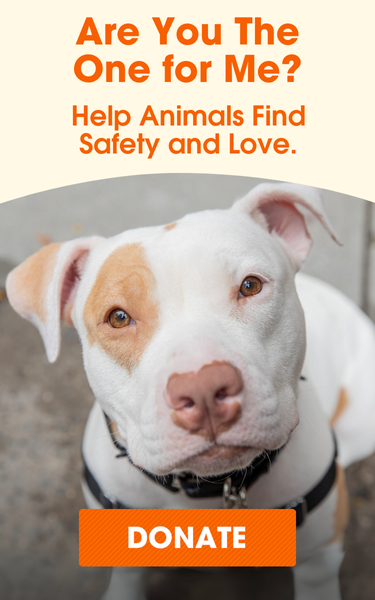
Navigating Adoption: Finding and Welcoming Home Your Pet

Thinking about adopting a pet? That’s exciting! There are millions of animals in shelters waiting for loving homes. Your adoption will make a difference for the lucky pet you bring home and for many others, too. It’s a ripple: When you adopt, you free up space and resources for shelters to help more animals.
Planning for a new pet is exciting and might be a little overwhelming. We’ve collected information to help you find and prepare for your pet.
Where to Look for Your Pet
There are nearly 5,000 animal shelters in the U.S. and more than 9,500 animal rescues. Collectively, they are called animal welfare organizations. Some organizations have facilities you can visit to meet and adopt pets. Others may not have a facility but keep pets in loving foster homes as they await adoption. Many do both!
Animal welfare organizations may specialize in admitting and rehoming certain species, like cats and dogs, while others take in and rehome many domestic animal species, like goats, rabbits, horses, cats, dogs and reptiles. These organizations are full of homeless pets — yours is out there waiting for you.
If you are already familiar with an animal shelter or rescue group in your community, visit them online or stop by their facility to find out what animals they have available for adoption. If not, or if your nearest shelter or rescue is located many miles away, search engines like Adopt A PetTM or Petfinder® can help you discover animal shelters, rescues and adoptable pets near you and around the country.
Adoption Process and Fees
Adoption Process
Every animal welfare organization will have their own unique adoption process, fees and parameters. Some offer same-day adoptions, while others take longer to complete the adoption process. Whether you are starting your search or have already spotted a pet online, visit the organization’s website to learn more about their adoption process. Many provide their adoption application on their site, as well.
Pet Bios
To help you learn more about their adoptable pets, organizations often publish short descriptions and photos of each pet on their website or on search engines like Petfinder. These bios describe the animal’s personality and unique needs to give you a sense of whether the pet you are interested in is a good fit for your home. The shelter or rescue will help you determine if the animal you applied for is a good match.
Adoption Fees
Animal shelters and rescue groups usually charge an adoption fee. These fees vary between organizations and help cover the costs of caring for animals. Organizations use these funds to pay for veterinary care, spaying or neutering, vaccinations and food, and to continue helping other pets in need. When you pay an adoption fee, you make it possible for the shelter or rescue to continue their lifesaving work.
Fee-Waived Events and Promotions
Shelters and rescue groups will occasionally host adoption promotions where they reduce adoption fees or waive them entirely. These promotions can make adoption more accessible and affordable, and they bring much-needed attention to animals who are often overlooked, like large dogs, senior pets or those with special medical needs.
Preparing Your Home for a Dog or Cat
Make the first week with your new pet easier for you and them by preparing your home. Here are a few suggestions:
- Create a dedicated space. Whether it’s a room in your home, a cozy crate or a soft bed, establish a quiet, safe space for your pet to decompress.
- Pet-ready your home. It will take time for your new pet to adjust to your home, and they may need training. Secure cords, secure your windows and doors, and remove chewable items to keep your pet safe and to protect your things. Consider using gates to limit access to specific areas. If you are adopting a cat, you can place double-sided sticky tape on furniture to discourage them from scratching.
- Research your plants. Some plants are poisonous to pets.
- Gather the necessities, like bowls for food and water and a litter box for your cat.
- Prep the fun stuff. Consider purchasing a few toys to welcome home your adopted cat or dog. Your cat will need scratching posts, and many enjoy a cat perch! Toys can help pets enjoy the fun of chewing, making it less likely your new dog or cat will chew on your belongings.
- If you already have a pet at home, store their toys separately until your pets adjust to one another — they may need to learn to share!
Veterinary Care
You want your pet to live a long, healthy, happy life, so it’s important to plan for regular veterinary care. This includes checkups, vaccinations, parasite prevention and potential emergencies. Shortly after you adopt, establish your pet with a nearby veterinarian, and they will guide you through your pet’s veterinary needs.
Pet Insurance
Veterinary care can be expensive, but pet insurance can help. There are many pet insurance providers, like ASPCA Pet Health Insurance — the ASPCA’s exclusive pet insurance partner, that offer customizable coverage options to help you pay for your pet’s veterinary needs. Research pet insurance plans or speak with your veterinarian to find a plan that is right for you.
Pet insurance tip: Consider signing up for pet insurance before health issues arise because many insurance plans have a waiting period before coverage begins and do not cover pre-existing conditions.
Welcome Home
Congratulations! You’ve prepared your home, found your new best friend, navigated the adoption process, and it’s time to welcome your pet home.
Some pets adjust to a new environment quickly and confidently. Others may need more time to feel comfortable. As the days unfold, remember the 3-3-3 Guideline:
Your Pet’s First 3 Days:
Your adopted pet might feel nervous and overwhelmed. They are encountering new sounds, smells, people and possibly other pets in the home. It might be scary, and trust can take time. You can help them navigate their first three days by:
- Getting into a routine.
- Being patient and positive.
- Staying calm and giving clear direction (including setting boundaries).
- Giving them time and space to observe their new home and companions.
- Don’t force interactions with people or other pets.
The Next 3 Weeks:
Throughout the following three weeks, pets decompress and begin to settle into their new home. As they become more comfortable, their personality begins to shine. During this time, you can work on:
- Basic training.
- Positively reinforcing good behaviors and successes.
- Giving calm, clear directions and maintaining boundaries.
- Keeping consistent routines.
- Bonding.
Don’t forget to make an appointment with a veterinarian!
The First 3 Months:
During the first three months, pets will continue adjusting to their new surroundings and companions. Their trust increases and they start to show their true personalities as they integrate into the household. Spend your first three months:
- Learning their likes, dislikes, fears and needs.
- Bonding.
- Training.
- Establishing a routine and good habits.
- Celebrating your adoption.
Not Ready to Adopt? Try Fostering!
Shelters and rescues are full of wonderful, adoptable pets. If you are not ready to adopt, or you already have pets and want to help other animals, fostering might be an option for you. Fostering is temporarily caring for an animal in your loving home environment while your local organization finds them a permanent home. When you foster, space and resources become available at the shelter or rescue group for other homeless animals who need them.
Some animals prefer quiet environments, some enjoy being active, some become depressed in shelters and some just need a comfortable place to recover from an illness or injury. By fostering, you give animals a break from the shelter, expose them to new people and increase their chances of adoption. Lend a paw by fostering a dog, cat or other animal for your local animal shelter or rescue group.
Thank you for choosing adoption (or fostering), and congratulations! You have made a difference, and your pet is lucky to have you. Here are a few additional resources to help you and your pet along the way:
Additional Resources:

